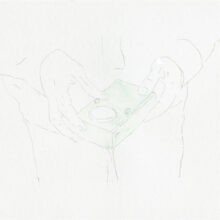Audio Topography
Audio Topography
For thousands of years, sound waves were not able to be captured or recorded. According to Canadian composer, writer and environmentalist R. Murray Schafer, are sounds originals before the invention of a recording device, appearing at a certain place and time. Most of our knowledge of sounds, tones and acoustical events in the past comes from graphic notation systems and written witness accounts. For example, in his journal, German naturalist and explorer Alexander von Humboldt wrote that the sounds of the orinoco were not as loud during the day as during the night. According von Humboldt, this change in volume was probably caused by the high temperature during the day, creating a density in the air, which would mask the water sounds. This observation is maybe not accurate or even complete, but it gives us a good idea of the sonic situation as experienced by Humboldt.
To understand what sound is, one must look for similarities and differences between sounds through analysis. In the research project “Audio topography” we focus on the study and analysis of field recordings and sonic reports which we can find sound archives. Following the concept “keynote sound” proposed by Schafer: “a sound which is created by its geography and climate, often possesses archetypal significance and may affect the behavior and lifestyle of a society.” Spatial, acoustical, cultural and historical features of sounds would result in an “audio topography”. It is our intention not only to study and map auditory environments, but to create installation works, which are composed out of audio topographies, multi-dimensional audiovisual works, where sounds and images are distributed in space by multiple sources.
Keywords: field work, sound archive, audio analysis, relocation, reenactment
By Esther Vanrooij
Latest
 | 08.07.20 | Audio Topography |